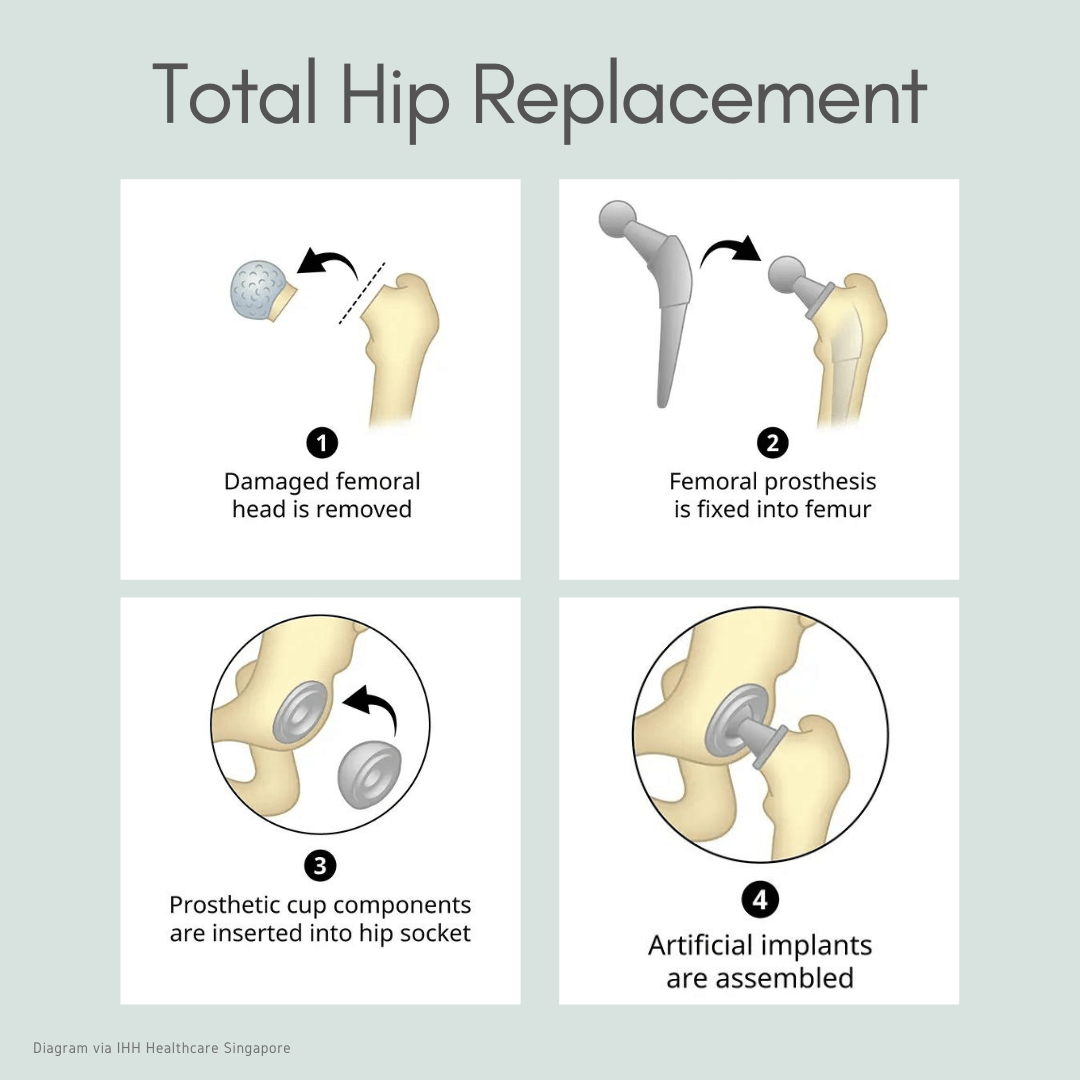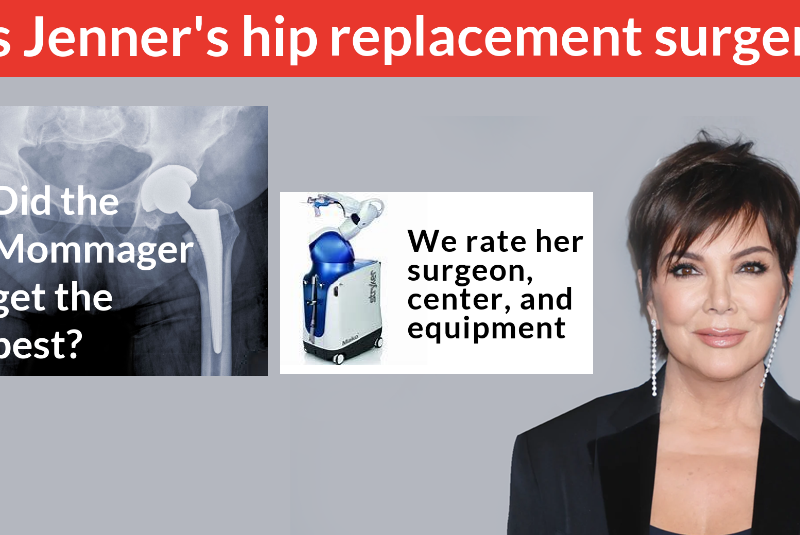
Hip replacement surgery: from pickleball to hip pain and back!
Hip replacement surgery: from pickleball to hip pain and back! https://bestpracticehealth.tv/wp-content/uploads/2023/05/pickleball-banner.jpg 1024 535 Best Practice Health TV Best Practice Health TV https://bestpracticehealth.tv/wp-content/uploads/2023/05/pickleball-banner.jpgWesley Richards is an avid pickleball player, but a few years ago, his hip pain was getting in the way of his game.
Wesley knew a lot about hip pain: he had his first hip replacement nine years earlier. After a misdiagnosis, multiple consultations, and some hesitation on his part, Wesley eventually found the care he needed.
“I was in denial for a long time and I finally went,” Wesley said.
Wesley was ultimately diagnosed with osteoarthritis of the hip and recommended for a hip replacement surgery.

Hip replacement: When, why, and how it’s done
In a hip replacement surgery, the surgeon removes arthritis parts of the hip bone and replaces them with prosthetic parts that can replicate the function of a healthy, young hip.
Hip replacement surgery is recommended in a variety of cases, but patients are most often between 50 and 80 years old and diagnosed with some form of arthritis. Before surgery, doctors usually prescribe other treatments such as physical therapy or a mobility aid like a cane or walker. If other options aren’t effective, then a hip replacement is recommended.
Common reasons for recommending hip replacement surgery:
- When hip pain limits everyday activities
- When hip pain continues even while resting
- Anti-inflammatory drugs and other treatments fail to relieve pain
Hip replacement surgery is one of the most successful operations overall, and advances in medical technology continue to improve the procedure.

Wesley’s first hip replacement surgery was a success, but the hospital was a challenge. After the operation, the doctor wanted him to stay in the hospital for a few days to recover. But Wesley wasn’t having that.
He practically had to bargain with the surgeon to get out of the hospital. “No,” he said. “I’m gonna leave here tomorrow. What do I have to do to satisfy you so I can get out of here?”
In order to get the OK to leave, Wesley would need to show he could walk and climb stairs when the doctor came to do his rounds the next morning. Wesley spent all night walking the hospital halls and climbing stairs. First thing the next morning, the doctor came into Wesley’s room and cleared him to leave before he could say anything. Apparently the nurses had already told the doctor about his efforts.
The doctor told Wesley, “you’re going to be miserable in here, just go home and take care of yourself.”
In addition to having to stay away from home, having total hip replacement surgery in a hospital is associated with higher rates of surgical site infection, medical errors, and COVID than having it in an ambulatory surgery center.
Wesley’s recovery trajectory continued, until one day when he took a fall from overextending on the pickleball court. He limped around for a while, but even after his bruise had healed Wesley knew something wasn’t right.
The outpatient experience
Wesley was ultimately able to see Dr. Dan Gallat, who had treated his wife previously. After seeing the x-rays, the orthopedic surgeon told Wesley he’d worn out the other hip, and they scheduled another surgery straight away.
This surgery would be different from Wesley’s first hip replacement. Modern hip prosthetics are made of a combination of metal, plastic and ceramic parts unlike previous prosthetics that were only metal. These new models last at least 20 years with less than 6% risk of failure. And are likely to last much longer.
“Total hip replacement surgery in a hospital is associated with higher rates of surgical site infection, medical errors, and COVID than having it in an ambulatory surgery center.”
This time, Wesley also opted to have his hip replacement in a surgical center instead of a hospital.
Wesley preferred the outpatient experience. In a hospital setting, Wesley said, the atmosphere is impersonal, and he had very little information going into the surgery.
“In the hospital, you are just one of so many,” Wesley said.
With the surgery center, the staff called Wesley multiple times before the procedure to provide information and they connected him to an app with videos and more resources.
“I think all of that advanced really tended to keep me at a fairly calm level,” Wesley said.
Compared to the sterile and chaotic feeling of a hospital, Wesley said the welcoming staff and interior of the surgery center was completely different.
“It’s kind of like walking into a living room and not some big sterile institutional building,” Wesley said.
When he first arrived on the day of the surgery, Wesley was early and the previous appointment was running late. As he lay in a bed waiting to be seen, listening to the saw whirring in the operating room across the hall, Wesley’s nerves started to creep up on him.
“But I was ready for it,” Wesley said. “I think I had the right frame of mind to go in for it.”
Now Wesley uses his own experience to help coach his friends going through the same thing.
Behind the curtain of Total hip replacement done by Dr. Dan Galat: hip pain gone, vitality back.
Recovery retrospective: taking care of your body and mind
Wesley stressed that a key factor in his treatment and recovery was his mentality. When the pain started, Wesley grew complacent and put off addressing the problem.
“I delayed it so long, and so many people my age do that, you just wait and you wait and you wait and you become old and feeble,” he said.
Wesley’s pain was preventing him from being as active as he could be, and the mental impact got in the way of seeking treatment.
“Your vitality just absolutely goes away and your mental state changes so significantly,” Wesley said.
Wesley said he, like many others, was looking at treatment “with an old person’s attitude.” Once he took a proactive approach to his care, he ultimately got results.
Many patients can go home and start moving as soon as the day of the surgery, and recovery typically takes between two and four weeks. Patients also don’t usually need assistive devices, and the incision for the surgery is small and closed with dissolvable stitches.
Even with modern technology helping the process, recovery can be difficult. Successful rehabilitation requires a proactive and hands-on approach.
After he found out he’d need surgery, Wesley started exercising to lose some weight. The hip bone is a main weight bearing joint in the body, so being overweight can put extra pressure on the joint and increase inflammation. Although weight loss is helpful in many cases, hip replacement surgery has no weight restrictions and patients should always consult their doctor about any diet plans.
Patients should also be proactive about physical therapy and work with a therapist both before and after the surgery to strengthen their muscles and jumpstart rehabilitation.
Mindset is also a key component to recovery. Wesley said he delayed treatment in part because of the effect pain had on his mentality.
It’s essential to stay aware of your needs and listen to your body when it’s trying to tell you something. Check in with yourself and communicate your concerns to both loved ones and medical professionals. It’s also useful to maintain a positive attitude about recovery and have goals for what you hope to accomplish in the weeks and months following the procedure.
Every individual’s experience recovering from hip replacement surgery is unique, but actively addressing your needs can put you on the right path to get back to your life.
By Grace M. Lieberman
Grace Lieberman is a journalist and science writer based in Phoenix, AZ.
- Post Tags:
- Pg - Total hip replacement
- Posted In:
- Total Hip Replacement










